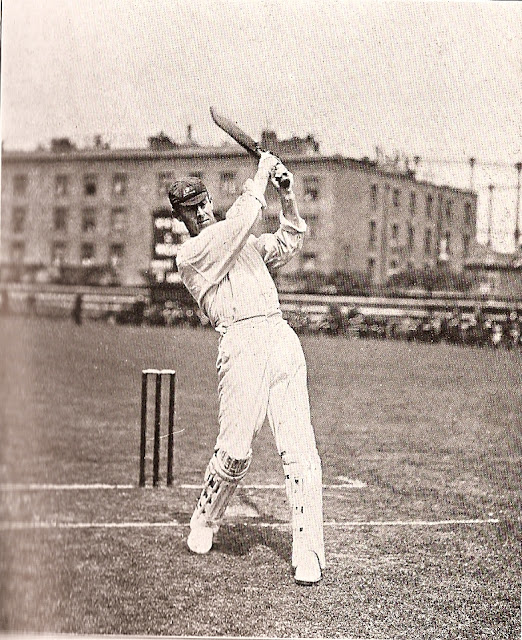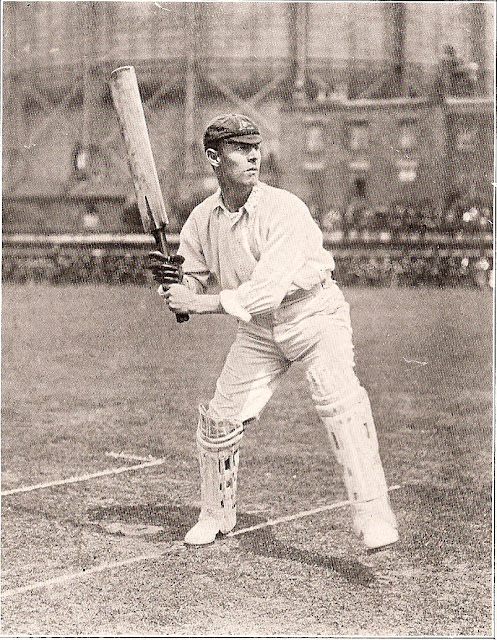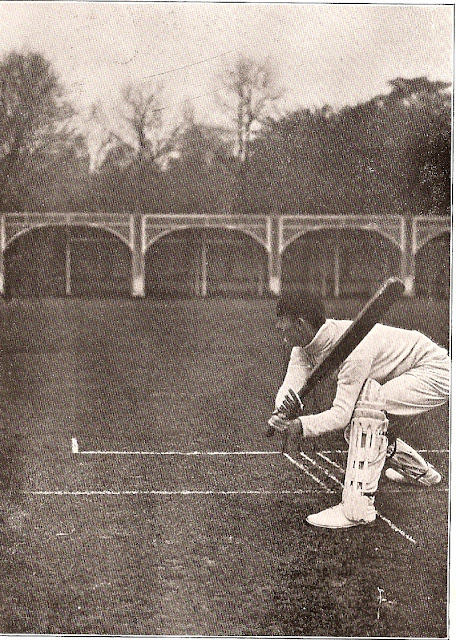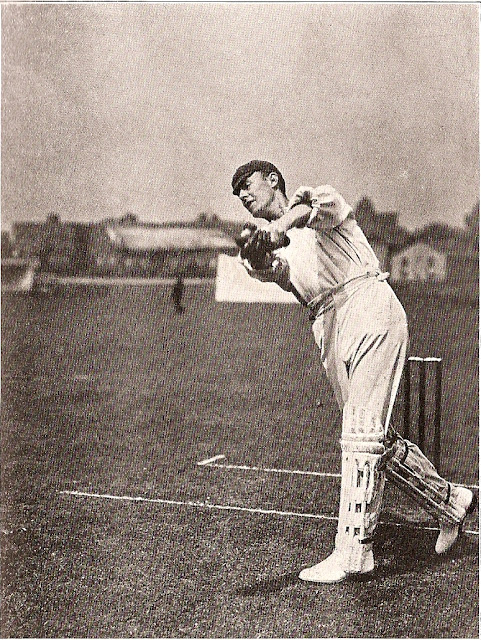SJS
Hall of Fame Member
'. . . he would completely revolutionise the art of batting and that his name would forever be associated with the initial crumbling of erstwhile cricket convention, and the glorious capitulating of orthodoxy in favour of a more versatile and virile comprehension of batting possibilities. Personally, I firmly believe that Victor's great purpose in life was to be the pioneer of a new conception of what may be best described as "cricket harmony."'
Another player senior to Trumper who played with him in all forms of the game was Australian captain and a legend in his own right, Monty Noble-himself one of the Australia's leading batsmen. What he says above is very pertinent to determine the place Trumper occupies in the pantheon of cricket's greats and its pioneers. We have all read of how WG brought about a dramatic change in batting by combining backfoot play and frontfoot play in his style. Before that the batsmen would either be frontfoot players (a vast majority) or backfoot players. WG played of both feet with equal facility and thus gave more importance to length and a merging of the two styles which made for a vaster repertoire of strokes and also a better option for defensive play. However, look back at those pictures of Ranji (taken closer to the end of his playing days) and you will notice that it is still drives off the front foot, pushes of the backfoot and cuts that constituted his strokeplay. There is a very important area of the ground he does not address, the leg side. Yes, he played the push off the front foot (with a straight bat) and the "cow shot" but you do not see the backfoot strokes from midwicket to long leg that we see so much of today. Now look at these strokes below.

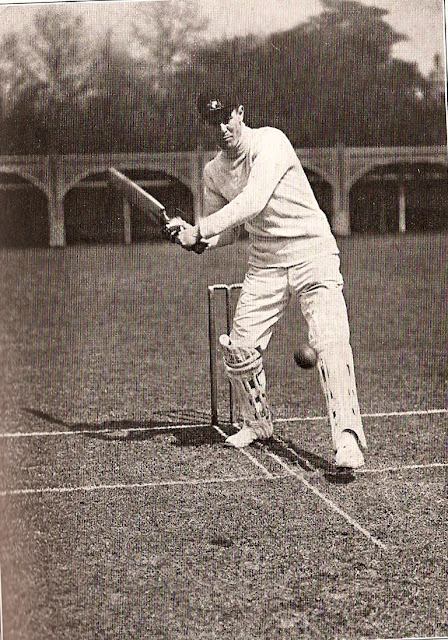

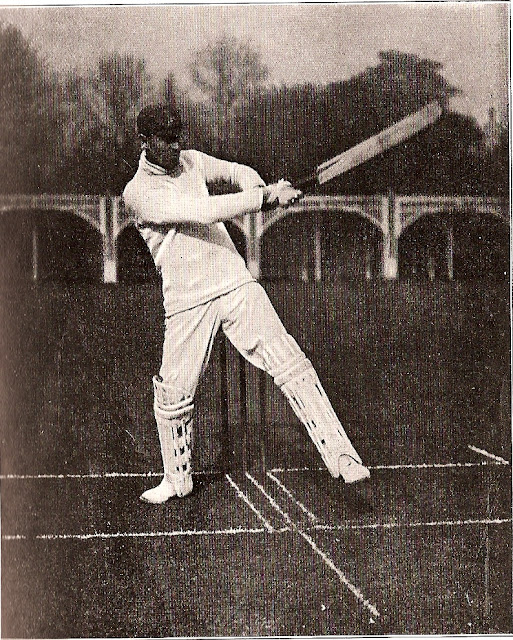

The hook and the pull, played to perfection a hundred years ago and even from outside the off stump and at a time when playing such a shot would get the opposition to scream their head off at the vulgarity of it. He played them from mid on to mid wicket to square leg and behind square.
Trumper to me is the first complete batsman. Hobbs is his successor. As Noble so succinctly puts it. . . .
"With his coming the old order passed for ever."
Noble writes in detail about Trumper in two chapters of his book, The Game's the Thing. The very fact that he devotes two entire chapters to Trumper (out of 16) in a book on Cricket and not cricketers speaks for itself. Their is a lot of biographical material and about Trumper as a person which is very good but I am putting here some excerpts of him as a cricketer.
Monty Noble on Trumper
A Genius Without Compeer and the harbinger of the New Order of Batsmanship
Opinions willl vary as to who was or is the world's greatest batsman. For myself I have no hesitation in giving the palm to Victor Trumper. He was not only great; he was a genius without compeer, and only his early death prevented him from establishing records alongside which even those of the redoubtable Grace and Hobbs would look less formidable. During the whole of his brief cricketing career I was closely associated with him, and have always felt a desire to set down in print some record of my appreciation of his wonderful ability.
.... from relative obscurity he, in a few short years, attained the goal towards which half the world is striving - fame; .... at all events ... he scaled to greater heights than had been achieved by any of his predecessors. Although the magnitude of his ultimate triumph could not then be foreseen, those of us who were intimately associated with him were not greatly astonished that cricketing success would eventually be his portion. . . Nature was moulding him mentally and physically - his brain, his eyes and his muscles- to such perfection of harmonious purpose that he might properly fulfill the destiny allotted to him, But we did not imagine that in a few seasons, he would completely revolutionise the art of batting and that his name would forever be associated with the initial crumbling of erstwhile cricket convention, and the glorious capitulating of orthodoxy in favour of a more versatile and virile comprehension of batting possibilities. Personally, I firmly believe that Victor's great purpose in life was to be the pioneer of a new conception of what may be best described as "cricket harmony."
Cricket at that time was languishing under the spell of unorthodoxy and passive resistance, which was fast throttling the people's appreciation of the game and destroying the allegiance of its many devotees. How Victor's wonderful demonstrations shocked old ideas and brought light out of semi-darkness is well known, particularly in Australia.
With his coming the old order passed for ever.
.... to be continued.... from relative obscurity he, in a few short years, attained the goal towards which half the world is striving - fame; .... at all events ... he scaled to greater heights than had been achieved by any of his predecessors. Although the magnitude of his ultimate triumph could not then be foreseen, those of us who were intimately associated with him were not greatly astonished that cricketing success would eventually be his portion. . . Nature was moulding him mentally and physically - his brain, his eyes and his muscles- to such perfection of harmonious purpose that he might properly fulfill the destiny allotted to him, But we did not imagine that in a few seasons, he would completely revolutionise the art of batting and that his name would forever be associated with the initial crumbling of erstwhile cricket convention, and the glorious capitulating of orthodoxy in favour of a more versatile and virile comprehension of batting possibilities. Personally, I firmly believe that Victor's great purpose in life was to be the pioneer of a new conception of what may be best described as "cricket harmony."
Cricket at that time was languishing under the spell of unorthodoxy and passive resistance, which was fast throttling the people's appreciation of the game and destroying the allegiance of its many devotees. How Victor's wonderful demonstrations shocked old ideas and brought light out of semi-darkness is well known, particularly in Australia.
With his coming the old order passed for ever.
Last edited:




